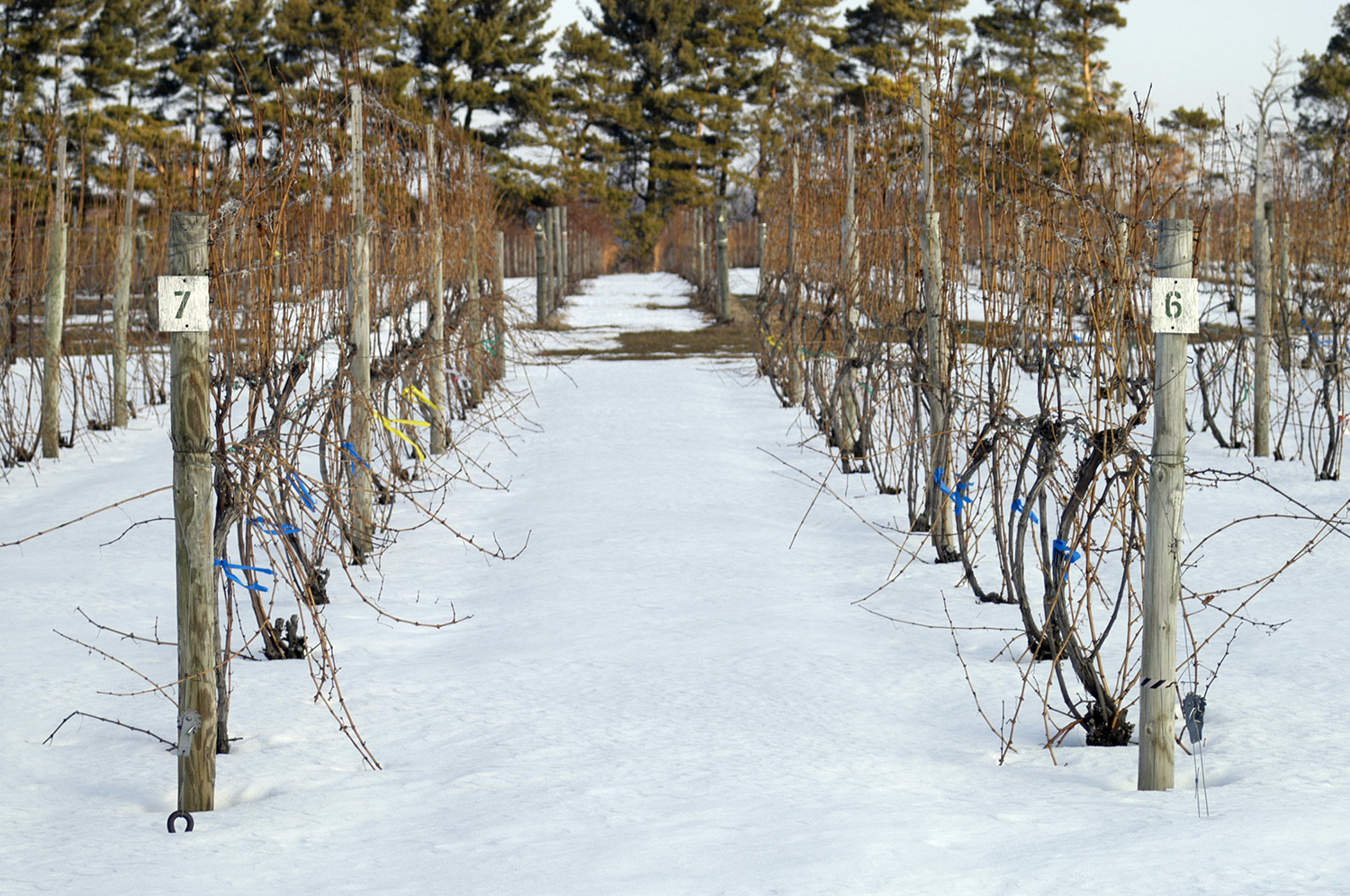How Cold Can Grapes Go?
by Mark Longstroth, MSU Extension educator
Each spring, I have growers ask me how cold does it have to be to hurt the grapes with the next frost? When we worry about spring frosts we worry about the growth stage of the plant and the conditions of the freeze. Growers can quickly determine the growth stage and for many fruit crops there are tables that give critical temperatures for each bud stage. Washington State and Rutgers Universities have both published tables to help growers determine the critical temperatures from growth stage.

These temperatures are determined by collecting buds in the field and putting them into a freezer. Usually large numbers of buds are collected and grouped into bundles of 10. The temperature in the freezer is slowly reduced. Temperatures are usually dropped one or two degrees in an hour and then held there for half an hour. One set of buds is removed and the temperatures in the freezer lowered another degree or two to another set point and more buds removed. The process is repeated as long as there are buds in the freezer. The bud bundles sit for a day at room temperature and are then examined for damage. This process is repeated at each growth stage and the entire collection and freezing process is repeated for several years. The more years the data is collected the better the critical temperature numbers. It is critical to have a good freezer and the ability to precisely control and monitor temperature.
The temperatures from WSU and Rutgers give 10% and 90% damage thresholds while the Rutgers temperatures give a 50% damage threshold and a temperature at which no damage occurs. Unfortunately these temperatures do not always agree. I will give you both so you will have something to compare to your field experience. The differences can be due to different factors when the buds were collected or to different varieties. The WSU numbers are for Concord grapes and the Rutgers numbers are for wine grapes.
In Michigan we have had several freezes when the damage to Michigan grape buds was much worse than I would have expected form the WSU values. Dr. Stan Howell also noticed this and did a series of freezing experiments using buds that were kept wet during the freezing which is similar to the conditions we see here in humid Michigan rather the arid InterMountain West of eastern Washington. Dr. Howell found that wet grape buds were damaged by warmer temperatures.
Critical temperatures for grapes | |||||
|---|---|---|---|---|---|
|
Growth Stage |
Description |
No Damage |
10% Kill |
50% |
90% |
|
Dormant |
Bud not swollen. |
N/A |
Varies with conditions. |
||
|
First Swell |
Early swell, |
N/A |
13 |
7 |
-3 |
|
Full Swell |
Late Swell, swollen bud looks pink. |
N/A |
21 |
26 |
10 |
|
Bud Burst |
Leaves at tip of bud separate. |
30 |
25 |
28 |
16 |
|
First Leaf |
One leaf out at 90° to the stem. |
30 |
27 |
28.5 |
21 |
|
Second Leaf |
Two leaves out, 90° to the stem. |
30 |
28 |
29 |
22 |
|
Third Leaf |
Three leaves out, 90° to the stem. |
N/A |
28 |
N/A |
26 |
|
Fourth Leaf |
Four leaves out at 90° to the stem. |
N/A |
28 |
N/A |
27 |
There are other factors that determine the severity of the freeze. There are two types of freezes; radiation freezes with clear calm conditions and advective freezes with windy conditions. Cooling of the ground by radiation of heat to the open sky causes radiation freezes. The cold air stays close to the ground and even moves downhill into low areas or "frost pockets.” Wind machines, sprinklers and heaters can be used if the temperatures are not to cold (above 23F) to provide frost protection. The movement of a cold area mass into the area causes advective freezes. Clouds help to hold in the day's heat and keep the morning temperatures warmer. Winds mix warmer air with cold air next to the ground. I never worry too much if the forecast is for cloudy windy conditions. The dew point is very important and may be hard to determine. MSU’s Enviro-weather includes dew points in its latest observations for each station. The dew point is the temperature at which the air is saturated with water vapor. The temperature will fall faster in dry air than moist air. Once the air reaches dew point water has to condense or freeze out of the air as the temperature falls so the rate at which the temperature falls is slower below the dew point than above it. The temperature will sometimes rise at the dew point, as water condenses from the air giving up heat to whatever it condenses on.
One place to find forecasts is MSU's Enviro-weather website. Select a nearby weather station by clicking on a yellow dot. Choose "overnight temperatures, hours below freezing" (under "weather observations and summaries") to view the previous night's average hourly temperature, forecasted low temperatures for the next night, and late afternoon dew points for that station and all other stations in the region. Sixty-hour forecasts for nearby National Weather Service stations are available at the bottom of the page. You can also click on the link in the upper left to view National Weather Service 7-day forecasts for the area.



 Print
Print Email
Email